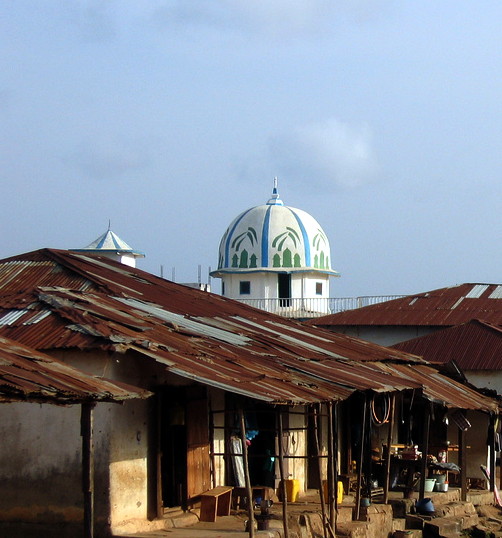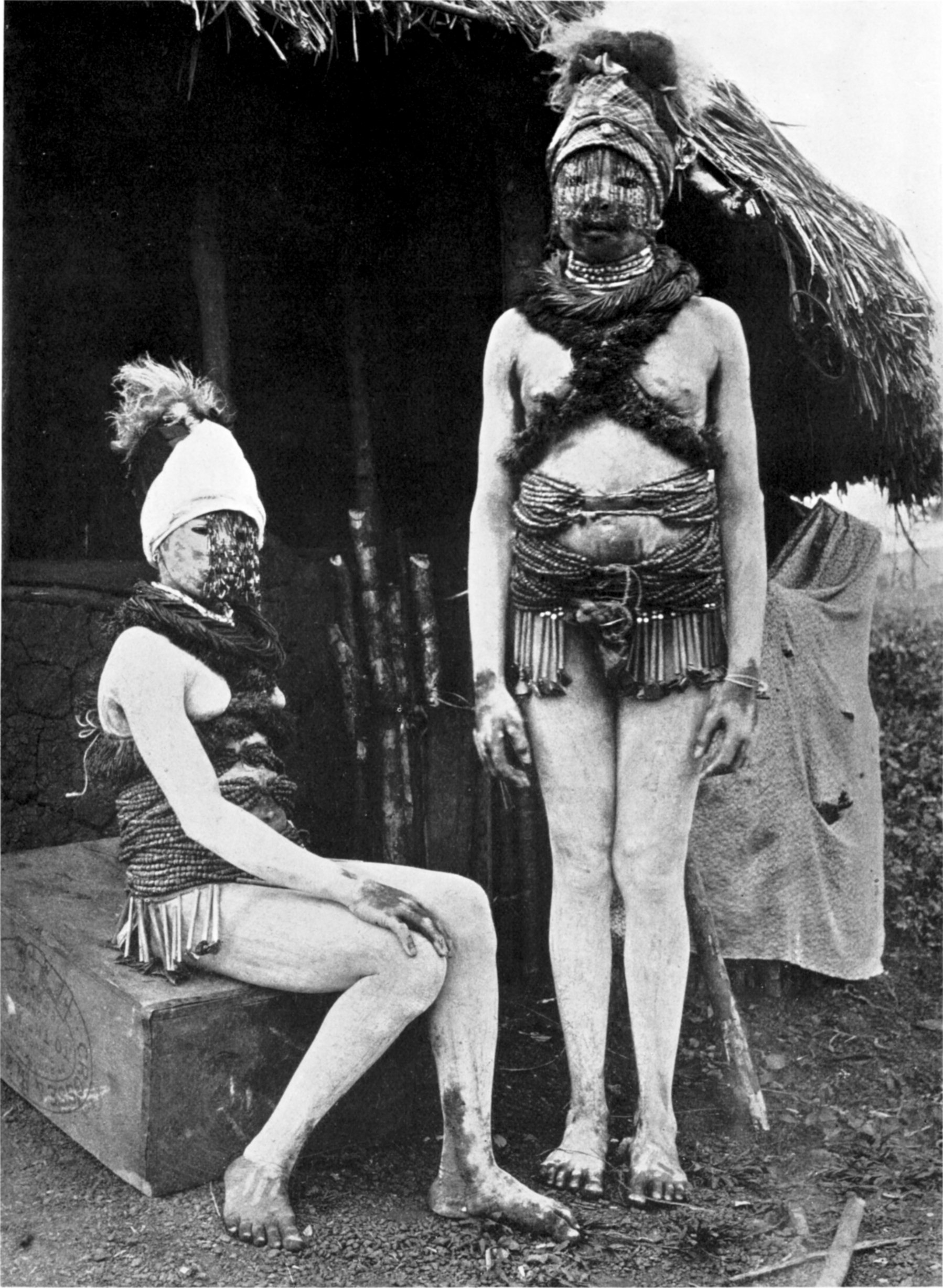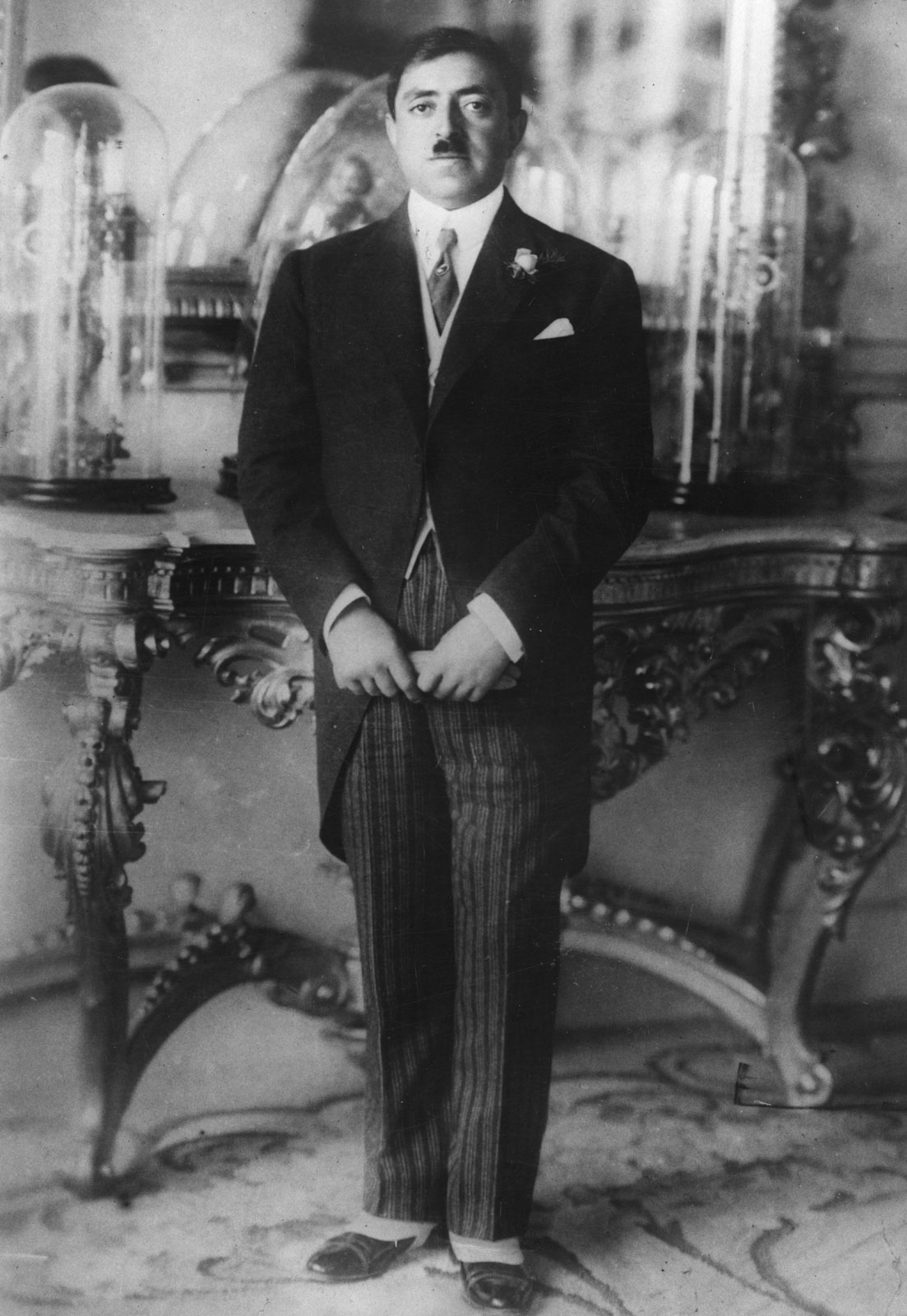|
Religion In Liberia
Christianity is the predominant religion in Liberia, with Protestantism being its largest denomination. Muslims are the largest minority group, largely coming from the Mandingo and Vai ethnic groups. The vast majority of Muslims are Malikite Sunni, with sizeable Shia and Ahmadiyya minorities. Traditional indigenous religions are practiced by 0.6% of the population, while 1.5% subscribe to no religion. Religions Adherents Christianity is by far the most common faith in Liberia, with recent surveys showing Christians making up 83-86% of the population, up significantly from surveys in the 1980s. By contrast, Islam has declined slightly from 14-15% in the 1980s to 11-12% in recent surveys. Traditional religions and non-religious individuals have seen greater declines. Christianity Christian denominations include Baptist, African Methodist Episcopal and African Methodist Episcopal Zion churches, Presbyterian, Nazarene Anglican, Lutheran, and a variety of Pentecostal churche ... [...More Info...] [...Related Items...] OR: [Wikipedia] [Google] [Baidu] |
Christianity
Christianity is an Abrahamic monotheistic religion based on the life and teachings of Jesus of Nazareth. It is the world's largest and most widespread religion with roughly 2.38 billion followers representing one-third of the global population. Its adherents, known as Christians, are estimated to make up a majority of the population in 157 countries and territories, and believe that Jesus is the Son of God, whose coming as the messiah was prophesied in the Hebrew Bible (called the Old Testament in Christianity) and chronicled in the New Testament. Christianity began as a Second Temple Judaic sect in the 1st century Hellenistic Judaism in the Roman province of Judea. Jesus' apostles and their followers spread around the Levant, Europe, Anatolia, Mesopotamia, the South Caucasus, Ancient Carthage, Egypt, and Ethiopia, despite significant initial persecution. It soon attracted gentile God-fearers, which led to a departure from Jewish customs, and, a ... [...More Info...] [...Related Items...] OR: [Wikipedia] [Google] [Baidu] |
Church Of The Province Of West Africa
The Church of the Province of West Africa is a province of the Anglican Communion, covering 17 dioceses in eight countries of West Africa, specifically in Cameroon, Cape Verde, Gambia, Ghana, Guinea, Liberia, Senegal and Sierra Leone. Ghana is the country with most dioceses, now numbering 11. History Missionary work began in Ghana in 1752. The Church of the Province of West Africa was established in 1951 by the bishops of five West African dioceses (Accra, Lagos, Niger, Sierra Leone and the Diocese of Gambia and Guinea) with the consent of the Archbishop of Canterbury. In 1977 they were joined by the Diocese of Liberia. In February 1979, the new Church of Nigeria was inaugurated as a separate province. In 1981 Sierra Leone was divided into the Diocese of Freetown and the new missionary Diocese of Bo and four new Ghanaian dioceses of Cape Coast, Koforidua, Sekondi and Sunyani/Tamale were formed. In 1985 the Gambia and Guinea diocese was partitioned into English-speaking Gambia ... [...More Info...] [...Related Items...] OR: [Wikipedia] [Google] [Baidu] |
Liberia
Liberia (), officially the Republic of Liberia, is a country on the West African coast. It is bordered by Sierra Leone to Liberia–Sierra Leone border, its northwest, Guinea to its north, Ivory Coast to its east, and the Atlantic Ocean to its south and southwest. It has a population of around 5 million and covers an area of . English is the official language, but over 20 indigenous languages are spoken, reflecting the country's ethnic and cultural diversity. The country's capital and largest city is Monrovia. Liberia began in the early 19th century as a project of the American Colonization Society (ACS), which believed black people would face better chances for freedom and prosperity in Africa than in the United States. Between 1822 and the outbreak of the American Civil War in 1861, more than 15,000 freed and free-born black people who faced social and legal oppression in the U.S., along with 3,198 Afro-Caribbeans, relocated to Liberia. Gradually developing an Americo- ... [...More Info...] [...Related Items...] OR: [Wikipedia] [Google] [Baidu] |
Krahn People
The Krahn are an ethnic group of Liberia and Ivory Coast. This group belongs to the Kru language family and its people are sometimes referred to as the Wee, Guéré, Sapo, or Wobe. It is likely that Western contact with the Kru language is the primary reason for the development of these different names. History The Krahn arrived in an area of Liberia previously known as the "Grain Coast" as part of early 16th-century migrations from the northeast and what is now Ivory Coast. This migration occurred due to pressure on local populations resulting from the emigration of ethnic groups from western Sudan after the decline of medieval empires, as well as an increase in regional wars. At the time, the African slave trade was becoming more prominent within Liberia. Some Kru subgroups were sold into slavery by their neighbours, but it was more common for the Krahn and other coastal peoples in Liberia to serve as local traders, brokering deals within the Western slave market. Many Kru c ... [...More Info...] [...Related Items...] OR: [Wikipedia] [Google] [Baidu] |
Sande Society
Sande, also known as zadεgi, bundu, bundo and bondo, is a women's initiation society in Liberia, Sierra Leone, Guinea and the Ivory Coast. The Sande society initiates girls into adulthood by rituals including female genital mutilation. It is said by its supporters to confer fertility, to instill notions of morality and proper sexual comportment, and to maintain an interest in the well-being of its members throughout their lives. In addition, Sande champions women's social and political interests and promotes their solidarity vis-a-vis the Poro, a complementary institution for men. The Sande society masquerade is a rare and perhaps unique African example of a wooden face mask controlled exclusively by women – a feature that highlights the extraordinary social position of women in this geographical region. Geographic extent The Sande society is found throughout the Central West Atlantic Region, an ethnically plural and linguistically diverse region that lies within the littora ... [...More Info...] [...Related Items...] OR: [Wikipedia] [Google] [Baidu] |
Poro
The Poro, or Purrah or Purroh, is a men's secret society in Sierra Leone, Liberia, Guinea, and the Ivory Coast, introduced by the Mane people. It is sometimes referred to as a hunting society and only males are admitted to its ranks. The female counterpart of the Poro society is the Sande society. Structure The Poro society was part of the culture introduced by Mane people, migrants to the region as early as 1000 AD.Fyfe, Christopher"Weighing the Probabilities."Review: ''Landlords and Strangers: Ecology, Society and Trade in Western Africa, 1000–1630.'' By George E. Brooks. Boulder, CO: Westview Press, 1994. Two affiliated and secret associations exist in Sierra Leone, the Yassi and the Bundu. The first is nominally reserved for females, but members of the Poro are admitted to certain ceremonies. All the female members of the Yassi must be also members of the Bundu, which is strictly reserved to women. In Liberia, the female equivalent of the Poro is the Sande society. ... [...More Info...] [...Related Items...] OR: [Wikipedia] [Google] [Baidu] |
A Masked Poro Dancer From Secret Society Wellcome M0005352
A, or a, is the first letter and the first vowel of the Latin alphabet, used in the modern English alphabet, the alphabets of other western European languages and others worldwide. Its name in English is ''a'' (pronounced ), plural ''aes''. It is similar in shape to the Ancient Greek letter alpha, from which it derives. The uppercase version consists of the two slanting sides of a triangle, crossed in the middle by a horizontal bar. The lowercase version can be written in two forms: the double-storey a and single-storey ɑ. The latter is commonly used in handwriting and fonts based on it, especially fonts intended to be read by children, and is also found in italic type. In English grammar, " a", and its variant " an", are indefinite articles. History The earliest certain ancestor of "A" is aleph (also written 'aleph), the first letter of the Phoenician alphabet, which consisted entirely of consonants (for that reason, it is also called an abjad to distinguish it fro ... [...More Info...] [...Related Items...] OR: [Wikipedia] [Google] [Baidu] |
Billema Kwillia
Billema Kwillia, or Belema Kwelea, or Belema Kollia (born c. 1925) is a teacher and composer from Liberia. She composed the hymn "A va de laa" which was translated to English from Loma as "Come, Let Us Eat", and features in several modern hymnals. Biography Kwillia was born circa 1925 in Liberia.C. MICHAEL HAWN/S T KIMBROUGH, JR. (with appreciation for information provided by Daniel W. Sopo). "Billema Kwillia." ''The Canterbury Dictionary of Hymnology.'' Canterbury Press. Web. 24 Feb. 2021. http://www.hymnology.co.uk/b/billema-kwillia. Little is known about her early life, other than she was taught to read her language Loma through a literacy programme funded by a missionary church. She converted to Christianity and became an evangelist, as well as working as a teacher. Her most widely known work is the hymn "Come, Let Us Eat", which was originally written in Loma in the 1960s and was recorded by Margaret D. Miller. Miller was an American missionary to Liberia who worked at th ... [...More Info...] [...Related Items...] OR: [Wikipedia] [Google] [Baidu] |
Westernization
Westernization (or Westernisation), also Europeanisation or occidentalization (from the ''Occident''), is a process whereby societies come under or adopt Western culture in areas such as industry, technology, science, education, politics, economics, lifestyle, law, norms, mores, customs, traditions, values, mentality, perceptions, diet, clothing, language, writing system, religion, and philosophy. During colonialism it often involved the spread of Christianity. Westernization has been a growing influence across the world in the last few centuries, with some thinkers assuming Westernization to be the equivalent of modernization, a way of thought that is often debated. The overall process of Westernization is often two-sided in that Western influences and interests themselves are joined with parts of the affected society, at minimum, to become a more Westernized society, with the putative goal of attaining a Western life or some aspects of it, while Western societies are themselve ... [...More Info...] [...Related Items...] OR: [Wikipedia] [Google] [Baidu] |
Kwi (Liberia)
Kwi is a Liberian term used to connote Westernization, adherence to Christianity (versus indigenous religions), a Westernized first name and surname, literacy through a Western-style education, and adherence to a cash economy instead of a subsistence economy, regardless of an individual's ethnic origin. However, it has historically denoted strong adherence to Americo-Liberian cultural norms, although one need not identify as ethnically Americo-Liberian in order to be kwi. Etymology The term kwi has roots in the Kpelle word ''kwi-nuu'' (foreigner or civilized person). The Kpelle tribal members defined kwi as a person who spoke fluent English and wore Western attire. They also associated kwi status with Monrovia, Liberia's capital city, which they referred to ''kwi-taa'' (foreigner town or civilized town). The Kru tribe also used the term kwi to identify the Americo-Liberian settlers - many of whom were mulattoes - and it was the same word that Krus used to describe whites. Evol ... [...More Info...] [...Related Items...] OR: [Wikipedia] [Google] [Baidu] |
Catholic Church
The Catholic Church, also known as the Roman Catholic Church, is the largest Christian church, with 1.3 billion baptized Catholics worldwide . It is among the world's oldest and largest international institutions, and has played a prominent role in the history and development of Western civilization.O'Collins, p. v (preface). The church consists of 24 ''sui iuris'' churches, including the Latin Church and 23 Eastern Catholic Churches, which comprise almost 3,500 dioceses and eparchies located around the world. The pope, who is the bishop of Rome, is the chief pastor of the church. The bishopric of Rome, known as the Holy See, is the central governing authority of the church. The administrative body of the Holy See, the Roman Curia, has its principal offices in Vatican City, a small enclave of the Italian city of Rome, of which the pope is head of state. The core beliefs of Catholicism are found in the Nicene Creed. The Catholic Church teaches that it is the on ... [...More Info...] [...Related Items...] OR: [Wikipedia] [Google] [Baidu] |






.jpg)